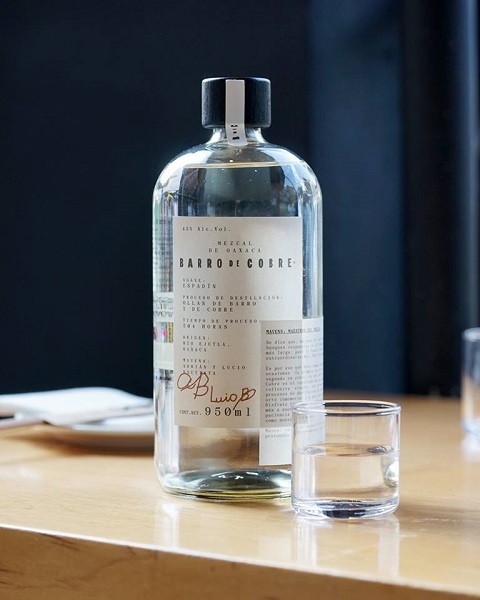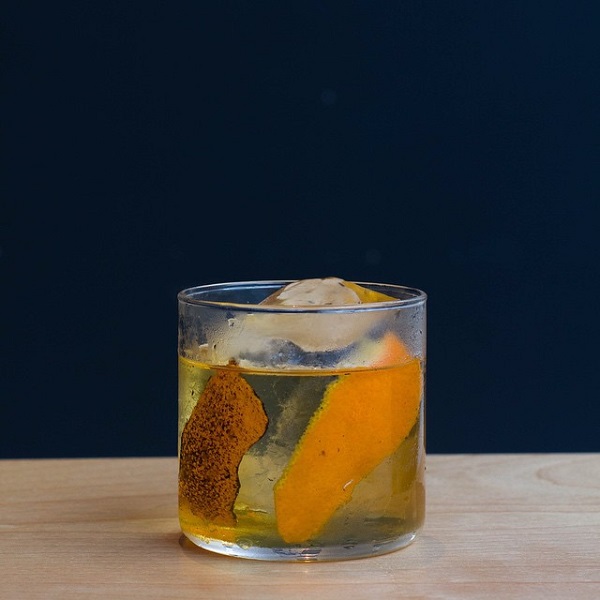How to drink mezcal—with or without the worm in the bottle | ABS-CBN

Welcome, Kapamilya! We use cookies to improve your browsing experience. Continuing to use this site means you agree to our use of cookies. Tell me more!
How to drink mezcal—with or without the worm in the bottle
How to drink mezcal—with or without the worm in the bottle
Gail Sotelo
Published Sep 18, 2018 11:08 AM PHT
|
Updated Sep 26, 2018 09:49 AM PHT
I first encountered mezcal years ago through a Mexican diplomat. His family invited mine to his house for a lovely, proper Mexican dinner at the end of which he asked me, “How brave are you?”
I first encountered mezcal years ago through a Mexican diplomat. His family invited mine to his house for a lovely, proper Mexican dinner at the end of which he asked me, “How brave are you?”
That’s when I saw… it. A bottle of very pale gold liquid with a worm inside.
That’s when I saw… it. A bottle of very pale gold liquid with a worm inside.
Sensing my polite revulsion (I neither had nor have anything that resembles a poker face), he laughed, explaining what it was: mezcal.
Sensing my polite revulsion (I neither had nor have anything that resembles a poker face), he laughed, explaining what it was: mezcal.
As for the worm, he explained that a person who needs a jolt of bravery is traditionally advised to ingest the worm with a shot of the mezcal (taking the phrase “liquid courage” to a whole other level).
As for the worm, he explained that a person who needs a jolt of bravery is traditionally advised to ingest the worm with a shot of the mezcal (taking the phrase “liquid courage” to a whole other level).
ADVERTISEMENT
While I haven’t found conclusive literature to support this (or a need to consume the worm, thank you very much), I do know a few things about mezcal.
While I haven’t found conclusive literature to support this (or a need to consume the worm, thank you very much), I do know a few things about mezcal.
Despite being a close relative of tequila, mezcal is distilled from the heart (called the piña) of any of the 30 types or variants of agave, while tequila is specifically mandated to be made from 100% blue agave. Also, to be labeled as tequila, the drink has to come strictly from Tequila in Mexico, while most mezcals come from Oaxaca. The Mezcal D.O., or Designation of Origin that dictates regions where the beverage can be made, as well as production standards and regulations, traditionally includes Guerrero, Durango, San Luis Potosí, Puebla, and Zacatecas. The regulations are controversial in that some producers find them restrictive, especially in the case of labeling. This means that it’s not surprising for a producer outside the Mezcal D.O. to produce a mezcal under a different name, but with remarkably similar qualities.
Despite being a close relative of tequila, mezcal is distilled from the heart (called the piña) of any of the 30 types or variants of agave, while tequila is specifically mandated to be made from 100% blue agave. Also, to be labeled as tequila, the drink has to come strictly from Tequila in Mexico, while most mezcals come from Oaxaca. The Mezcal D.O., or Designation of Origin that dictates regions where the beverage can be made, as well as production standards and regulations, traditionally includes Guerrero, Durango, San Luis Potosí, Puebla, and Zacatecas. The regulations are controversial in that some producers find them restrictive, especially in the case of labeling. This means that it’s not surprising for a producer outside the Mezcal D.O. to produce a mezcal under a different name, but with remarkably similar qualities.
Production-wise, mezcal is traditionally handcrafted in small quantities and is double distilled in clay or copper pot stills to get it to reach up to 55% ABV. Its variants vary depending on what the producers distill with or mix into the spirit, with options including different fruits and spices, and could be distilled with different poultry.
Production-wise, mezcal is traditionally handcrafted in small quantities and is double distilled in clay or copper pot stills to get it to reach up to 55% ABV. Its variants vary depending on what the producers distill with or mix into the spirit, with options including different fruits and spices, and could be distilled with different poultry.
Most mezcals, however, don’t get mixed and are made from 100% agave, allowing for the agave flavors to shine. Like tequila, mezcal is classified by age: Joven (unaged and clear), Dorado (unaged but with coloring agents added to it, giving it a distinctive golden color), Reposado or Añejado (which are wood barrel aged for 2-9 months), and Añejo (which are aged for a minimum of a year in wooden barrels, and up to 4 years for the 100% agaves).
Most mezcals, however, don’t get mixed and are made from 100% agave, allowing for the agave flavors to shine. Like tequila, mezcal is classified by age: Joven (unaged and clear), Dorado (unaged but with coloring agents added to it, giving it a distinctive golden color), Reposado or Añejado (which are wood barrel aged for 2-9 months), and Añejo (which are aged for a minimum of a year in wooden barrels, and up to 4 years for the 100% agaves).
In terms of consuming mezcal, it’s normally not part of a cocktail (unlike tequila being the traditional base for a classic Margarita) and is consumed as shots, with the traditional version including a citrus slice (orange, lime, or lemon), sal de gusano (or worm salt), ground fried larvae, and ground chili peppers.
In terms of consuming mezcal, it’s normally not part of a cocktail (unlike tequila being the traditional base for a classic Margarita) and is consumed as shots, with the traditional version including a citrus slice (orange, lime, or lemon), sal de gusano (or worm salt), ground fried larvae, and ground chili peppers.
Now, as for the worm… First, not all mezcals have worms. There are many traditions regarding the worm, including the worm releasing specific flavors to the mezcal. Honestly, nothing is certain regarding the inclusion of the worm, which is actually a moth’s larva, but it does make the drinker seem like a toughie drinking it.
Now, as for the worm… First, not all mezcals have worms. There are many traditions regarding the worm, including the worm releasing specific flavors to the mezcal. Honestly, nothing is certain regarding the inclusion of the worm, which is actually a moth’s larva, but it does make the drinker seem like a toughie drinking it.
Those curious enough to try a mezcal can buy their own bottles from Wine Depot stores (the Mezcal Joven Mexicano is a must-try). For a truly Mexican experience, Chino in BGC is always a great idea. Pretty much anything on their menu goes with the Mezcal Old Fashioned (a pretty interesting twist on an Old Fashioned by using Mexican drinks), but I’m all about pairing it with the tacos and ceviche.
Those curious enough to try a mezcal can buy their own bottles from Wine Depot stores (the Mezcal Joven Mexicano is a must-try). For a truly Mexican experience, Chino in BGC is always a great idea. Pretty much anything on their menu goes with the Mezcal Old Fashioned (a pretty interesting twist on an Old Fashioned by using Mexican drinks), but I’m all about pairing it with the tacos and ceviche.
Gail Sotelo has a WSET Advanced Certificate in Wines and Spirits. She is a wine consultant, blogger, and lecturer. She owns the drink blog 2shotsandapint.com which aims to make wine and other drinks accessible to everybody, and holds classes at Enderun Colleges.
ADVERTISEMENT
ADVERTISEMENT




